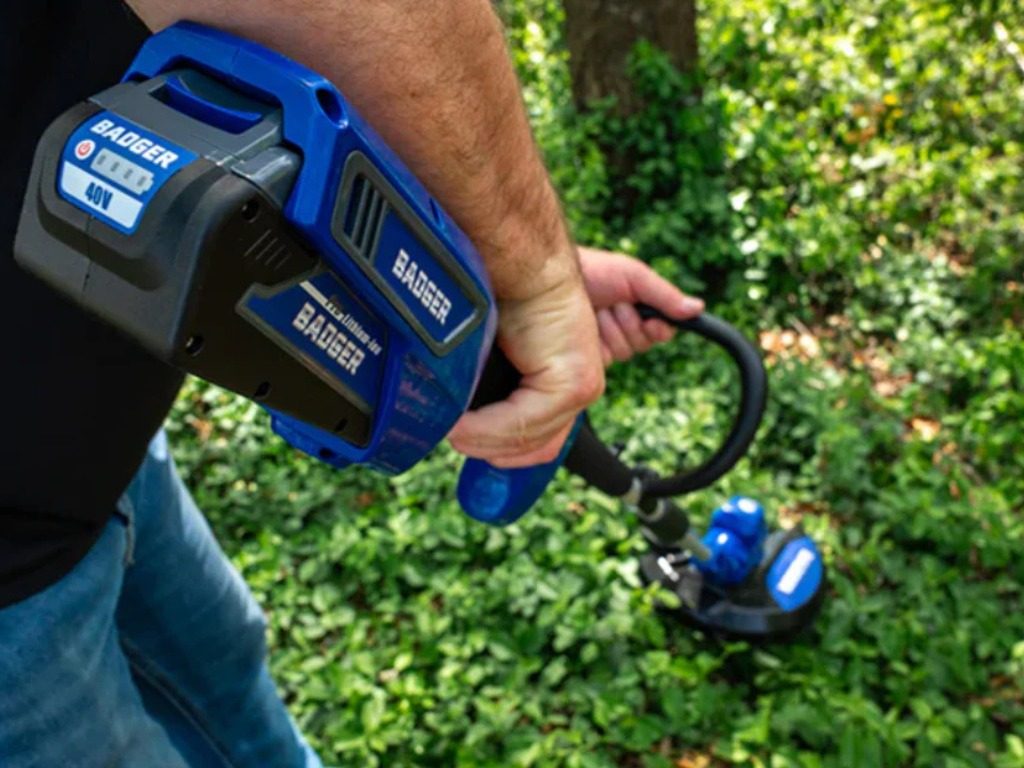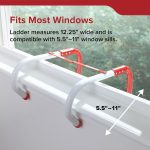What Is Electric Gardening? A Simple Introduction
Electric gardening uses battery- or cord-powered tools to maintain gardens efficiently, offering eco-friendly, low-effort solutions for beginners.
Gardening is a rewarding hobby, but it can feel overwhelming for newcomers. Enter electric gardening—a modern approach that leverages electric-powered tools to simplify tasks like mowing, trimming, and tilling. These tools, powered by batteries or cords, reduce physical strain, save time, and minimize environmental impact compared to gas-powered alternatives. They’re perfect for beginners who want to keep their lawns or flowerbeds pristine without mastering complex techniques or heavy manual tools. Electric gardening also aligns with sustainable practices, as many tools produce zero emissions and require less maintenance. Whether you’re tending a small backyard or a community plot, this guide will walk you through the essentials—tools, tips, and techniques—to get started. By the end, you’ll have a clear roadmap to cultivate your green space with confidence, even if you’ve never picked up a trowel before.
Your Questions About Electric Gardening Answered
What Are the Benefits of Electric Gardening for Beginners?
Snippet: Electric gardening offers ease of use, eco-friendliness, low maintenance, and cost savings, making it ideal for beginners.
Electric gardening tools are a game-changer for those new to cultivating plants. First, they’re user-friendly. Unlike gas-powered equipment, electric tools often start with a button, eliminating the need for pull-cords or fuel mixing. This simplicity lets beginners focus on gardening tasks rather than wrestling with machinery.
Second, they’re eco-friendly. Battery-powered tools produce no emissions, reducing your carbon footprint. For environmentally conscious gardeners, this is a big draw. Corded tools, while less mobile, are equally green since they rely on electricity rather than fossil fuels.
Maintenance is another perk. Electric tools don’t require oil changes or spark plug replacements, unlike their gas counterparts. For beginners, this means less time tinkering and more time planting. Cost-wise, electric tools are often cheaper to run. While the upfront cost for a quality electric mower or trimmer might sting, you’ll save on fuel and repairs over time.
Finally, electric tools are lightweight. A typical electric lawnmower weighs 20–40 pounds less than a gas model, making it easier for beginners to maneuver. This reduces fatigue, especially for those with smaller yards or limited physical strength.
Which Electric Gardening Tools Should Beginners Start With?

Snippet: Beginners should start with an electric lawnmower, string trimmer, leaf blower, and hedge trimmer for versatile garden care.
Choosing the right tools sets the foundation for successful electric gardening. Here’s a breakdown of must-haves for beginners:
- Electric Lawnmower: A cordless electric mower is ideal for small to medium lawns (up to 1/4 acre). Look for models with adjustable cutting heights and a runtime of at least 30 minutes. Brands like Ego Power+ or Greenworks offer reliable options.
- String Trimmer: Perfect for edging and tackling weeds, a battery-powered trimmer is lightweight and easy to handle. Opt for one with an automatic line feed to avoid manual adjustments.
- Leaf Blower: Clearing debris is a breeze with an electric leaf blower. Cordless models provide mobility, while corded ones offer unlimited runtime for smaller spaces.
- Hedge Trimmer: For shaping bushes or small shrubs, a lightweight electric hedge trimmer with a 20-inch blade is sufficient for most beginners.
When selecting tools, prioritize battery-powered options for flexibility, but ensure the battery is interchangeable across tools from the same brand to save costs. For small spaces, corded tools work well if you’re near a power outlet.
How Do You Choose Between Corded and Cordless Electric Tools?
Snippet: Cordless tools offer mobility but limited runtime; corded tools provide unlimited power but restrict range. Choose based on garden size.
The corded vs. cordless debate depends on your garden’s layout and your needs. Cordless tools, powered by rechargeable lithium-ion batteries, give you freedom to move without being tethered to an outlet. They’re ideal for larger yards or areas far from power sources. However, battery life—typically 20–60 minutes—can be a limitation. You’ll need to plan tasks around recharging or invest in a spare battery.
Corded tools, on the other hand, offer unlimited runtime, making them great for small yards or prolonged tasks. The downside? You’re limited by the cord’s length (usually 50–100 feet) and need to manage extension cords safely to avoid tripping or cutting them. For safety, use a heavy-duty, outdoor-rated extension cord.
For most beginners, cordless is the better choice for versatility, especially if your garden exceeds 1,000 square feet. If you’re working in a compact space, corded tools are cost-effective and reliable. Check the tool’s voltage (18V–40V for cordless, 10–15 amps for corded) to ensure it meets your needs.
What Are the Best Practices for Using Electric Gardening Tools Safely?
Snippet: Wear protective gear, check tools for damage, avoid wet conditions, and store batteries properly to use electric gardening tools safely.
Safety is critical when using electric tools. Here are key practices to follow:
- Wear Protective Gear: Use gloves, safety glasses, and closed-toe shoes to shield against debris. Ear protection is wise for louder tools like leaf blowers.
- Inspect Tools: Before use, check for frayed cords, loose parts, or battery leaks. Damaged equipment can cause accidents.
- Avoid Wet Conditions: Never use electric tools in rain or on wet grass to prevent shocks or slips. Cordless tools are safer in damp environments but still require caution.
- Store Properly: Keep batteries in a cool, dry place away from extreme temperatures. Charge batteries only with manufacturer-approved chargers.
- Read Manuals: Each tool has specific safety guidelines. Familiarize yourself with them to avoid misuse.
For corded tools, always unplug when not in use. For cordless, remove the battery after each session to prevent accidental starts. Following these steps ensures you garden safely and extend the life of your tools.
How Can Beginners Maintain Electric Gardening Tools?
Snippet: Clean tools after use, store in a dry place, charge batteries correctly, and sharpen blades regularly to maintain electric gardening tools.
Electric tools are low-maintenance, but proper care ensures longevity. After each use, wipe down tools with a damp cloth to remove dirt and sap, especially from blades. For mowers, clean the undercarriage to prevent grass buildup, which can affect performance.
Store tools in a dry, shaded area to protect against moisture and sun damage. Batteries should be stored at room temperature, ideally 50–70°F, and never fully discharged for long periods. Charge batteries to 50–80% before storing to maintain their health.
Sharpening is key for tools like trimmers and hedge cutters. Dull blades strain motors and produce uneven cuts. Use a professional sharpening service or a file for manual sharpening, following the tool’s angle. Check your manual for recommended sharpening intervals—typically every 20–30 hours of use.
Finally, inspect batteries and cords periodically for wear. Replace damaged components immediately to avoid performance issues or safety risks. With these habits, your tools will stay reliable for years.
What Are the Best Electric Gardening Techniques for Beginners?
Snippet: Start small, plan your garden layout, mow in patterns, trim strategically, and mulch to master electric gardening as a beginner.
Electric tools make gardening easier, but technique matters. Start with a small plot—say, a 10×10-foot area—to avoid overwhelm. Plan your layout by grouping plants with similar water and sunlight needs. This simplifies maintenance with electric tools.
When mowing, use a systematic pattern (e.g., stripes or spirals) to ensure even coverage. Set the blade height to remove no more than one-third of the grass length to avoid stressing the lawn. For trimming, work from the bottom up on hedges for a clean shape, and angle the trimmer slightly to avoid over-cutting.
Mulching is a great technique for beginners. Use an electric mulching mower to chop grass clippings or leaves into fine pieces that decompose and nourish the soil. This reduces waste and feeds your garden naturally.
Finally, water early in the morning to minimize evaporation, and use a battery-powered sprayer for even distribution. These techniques, paired with electric tools, help beginners achieve professional-looking results with minimal effort.
How Much Do Electric Gardening Tools Cost?
Snippet: Electric gardening tools cost $50–$500, with cordless models pricier than corded. Batteries add $50–$150 to the total.
Budgeting for electric gardening tools depends on your needs and tool type. Here’s a quick cost breakdown:
| Tool | Corded Price Range | Cordless Price Range |
|---|---|---|
| Lawnmower | $100–$250 | $200–$500 |
| String Trimmer | $50–$150 | $100–$300 |
| Leaf Blower | $50–$120 | $100–$250 |
| Hedge Trimmer | $40–$100 | $80–$200 |
Cordless tools are pricier due to batteries, which can cost $50–$150 each. To save money, buy a brand with interchangeable batteries across tools. Entry-level corded tools are budget-friendly but limit mobility. For beginners, a mid-range cordless kit (mower, trimmer, blower) from brands like Ryobi or Black+Decker, costing $300–$600, offers the best value. Check for bundle deals or seasonal sales to stretch your budget further.
Conclusion: Start Your Electric Gardening Journey
Electric gardening is a beginner-friendly way to cultivate a thriving garden without the hassle of gas-powered tools or manual labor. With the right tools—mower, trimmer, blower, and hedge cutter—you can tackle most tasks efficiently. Focus on safety, proper maintenance, and simple techniques like mulching or planned layouts to get the most out of your investment. The eco-friendly nature of electric tools also lets you nurture your garden while being kind to the planet. Ready to start? Pick one or two tools, start small, and experiment with your green space. Visit your local hardware store or check online retailers for deals on beginner-friendly electric tools. Share your gardening wins or questions in the comments below, and let’s grow together!
Read More Also: The Art of a Luxurious Bath
FAQ: Common Questions About Electric Gardening
What Is Electric Gardening?
Snippet: Electric gardening uses battery- or cord-powered tools to maintain lawns and plants efficiently.
It’s a modern approach to gardening that prioritizes ease and sustainability, ideal for beginners.
Are Electric Gardening Tools Worth It for Small Yards?
Snippet: Yes, electric tools are worth it for small yards due to their ease of use and low maintenance.
Corded tools are especially cost-effective for compact spaces, while cordless offers flexibility.
Can Electric Tools Handle Tough Weeds?
Snippet: Yes, electric string trimmers with high voltage (18V–40V) can handle tough weeds effectively.
Look for models with adjustable power settings for better control.
How Long Do Cordless Tool Batteries Last?
Snippet: Cordless tool batteries last 20–60 minutes per charge, depending on the tool and battery capacity.
Spare batteries or higher-capacity ones extend runtime.
Are Electric Tools Eco-Friendly?
Snippet: Electric tools are eco-friendly, producing no emissions and requiring less maintenance than gas tools.
Battery-powered models are greener when charged with renewable energy.
How Do I Store Electric Gardening Tools?
Snippet: Store electric tools in a dry, shaded area; keep batteries at 50–80% charge in cool conditions.
Avoid extreme temperatures to prolong tool and battery life.
Can Beginners Use Electric Tools Without Experience?
Snippet: Yes, electric tools are beginner-friendly due to their simple controls and lightweight design.
Read manuals and start with small tasks to build confidence.





